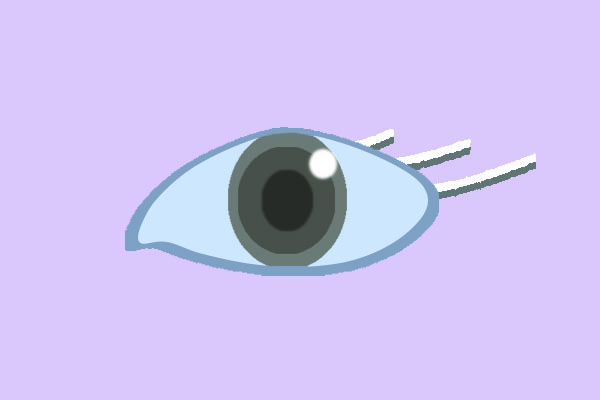
On a generic and gritty military base, a girl stands and stretches her arms. She does not wear the same orange prison overalls as her counterparts. Instead she has tied her light white shirt into a crop top. She smiles and muses at the men watching her. She introduces herself and jokes about the voices in her head. Barefoot, she runs to a box with her possessions in it and squeals. The men who came with her find their own boxes and pull out weapons, clothes, and sentimental items. When the camera returns to her, a slow pan up from her legs to her shoulders shows her shimmying into fishnets, booty shorts and a ripped crop top over a red bra. She pauses and looks around at the motionless crowd.
“What?”
Everyone springs back into action. Except us. We continue watching, maybe we laugh, and feel none of the embarrassment of the people on screen. Harley Quinn caught them gawking, not us.
In the opening of his second episode of “Ways of Seeing”, John Berger described what is now commonly understood as the “male gaze” by narrating, “Men dream of women. Women dream of themselves being dreamt of. Men look at women. Women watch themselves being looked at.” On our gritty military base, Harley Quinn changed under the direct supervision of her handlers and teammates. The film made a point to show off her outfit and the unanimous eyeing of those around her. Whether you found her appealing or not, you were included in that eyeing.
What would such a gaze look like if it were placed on her teammates? Would it be shots of an actor’s dehydrated abs or a pan up as he pulled on his pants? Can you reverse the “male gaze” that easily to find the “female gaze”? Or is it something else entirely?
If the “male gaze” exists to appeal to men’s desires and assert women’s places in the patriarchy, then any attempt at creating a “female gaze” is imitation. As much as incels would like for it to be, misandry doesn’t exist. There is no way to assert men’s roles in a matriarchy if none of us live in one to begin with. That said, the “female gaze” can still imitate the “male gaze” by playing into women’s desires. What are these desires? Stories written for women are often dubbed “chick flicks” and most, if not all, are romcoms. The men in these movies are not buff or scantily dressed. Jane Austen wrote some of the most enduring romances where most of her male love interests were slightly confused, very repressed, and ultimately respectful of the women they loved. Many women reference the hand scene in the 2005 “Pride and Prejudice” as a moment that makes them swoon. What happens in that scene? Mr. Darcy helps Elizabeth into her carriage, touching her hand for a moment. They say nothing to each other, and the camera lingers on his hand, shaking and flexing, as he walks away.
So, maybe we can imitate a “male gaze,” but then what? Will that remove the presence of gender in our media and thus our lives? Is it better to combat the “male gaze” by pushing against it or dismissing the notion of a gendered lens altogether?
Strictly speaking cinematically, what purpose does the “male gaze” serve? Is it a buffer to fill out the hour and a half we spend watching it? Does it reveal anything about the character or does it only reveal the motivations of the camera filming her?
I’m not a filmmaker, but I am a writer, and the phrase we use when something doesn’t work in a piece is, “It took me out of the story.” That is to say that whatever we put on that page was so out of place, so distracting, that the reader became aware of their spectating. This is disastrous —if the reader can’t lose themselves in the story, they might abandon it, and all our work will be for nothing. When a movie highlights the unnecessary parts of its female characters, it runs the risk of taking its audience out of the story. If that’s the case, why put the story to screen in the first place?





















